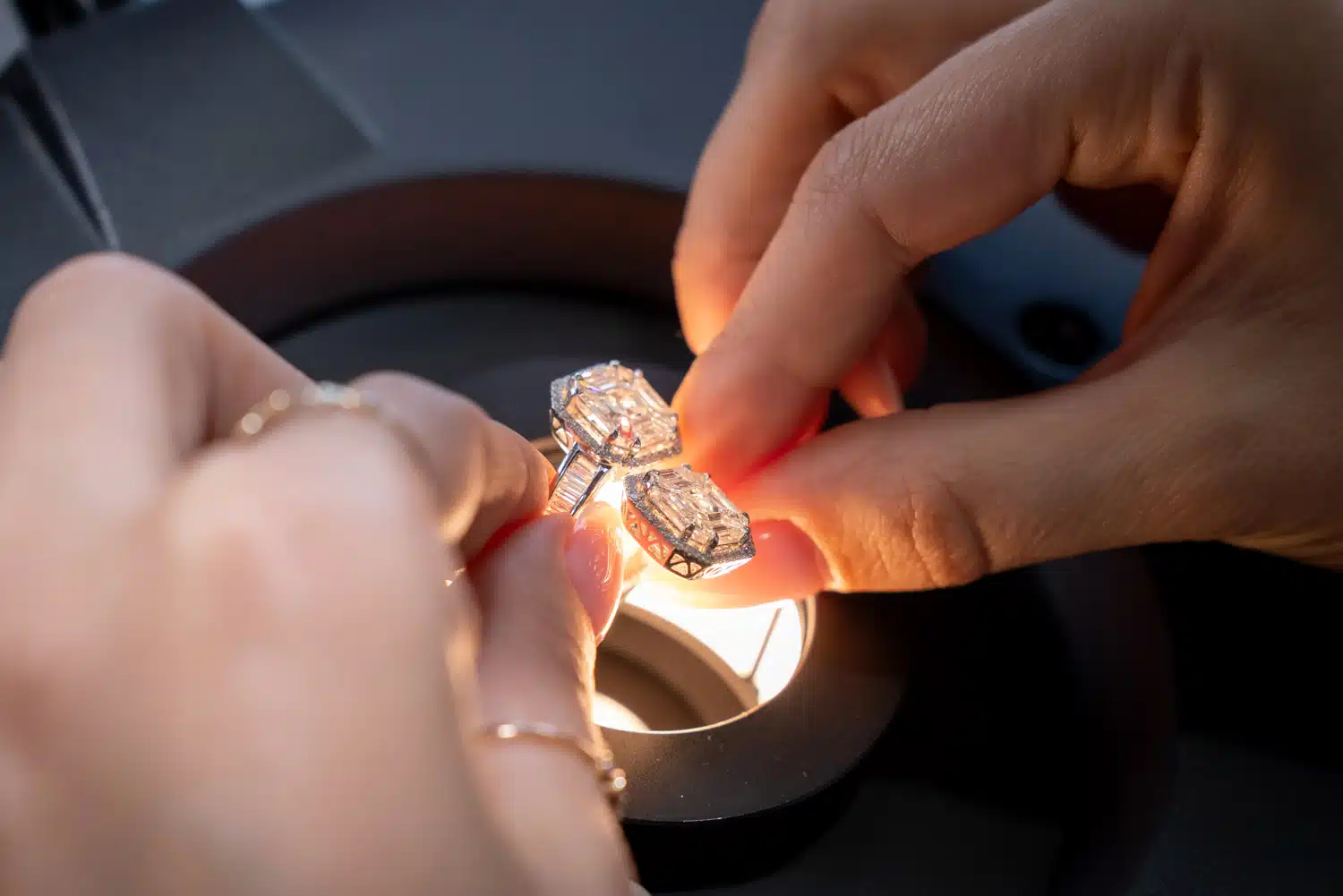Introduction: The Issue of Blood Diamonds
Blood diamonds, also known as conflict diamonds, have been a source of global controversy for decades. These diamonds are mined in war zones and sold to finance armed conflict against governments, often contributing to severe human rights abuses. The term “blood diamond” was popularized to highlight the atrocities tied to diamond production in certain regions, particularly in Africa. In this article, we will explore the significance of blood diamonds, their impact on global conflict, and why it’s essential to make ethical choices when purchasing diamonds.
What Are Blood Diamonds?
Blood diamonds are diamonds that are extracted from regions embroiled in conflict and sold to fund military activities or insurgencies. These diamonds are often mined under hazardous conditions, where workers face exploitation, violence, and human rights violations. The profits from the sale of these diamonds are used to fuel wars, perpetuate violence, and support rebel groups that fight against legitimate governments. The term “blood diamond” emphasizes the connection between the diamond trade and the devastating consequences of conflict.
The History Behind Blood Diamonds
The history of blood diamonds is deeply tied to the civil wars in countries like Sierra Leone, Angola, Liberia, and the Democratic Republic of Congo. In the 1990s, the world became increasingly aware of the role diamonds played in financing violent conflict. In Sierra Leone, for example, rebel groups used diamonds to purchase weapons, leading to widespread violence, mutilations, and the displacement of thousands of civilians. These diamonds were then sold on the global market, often without any awareness of their bloody origins. This sparked a global outcry and led to the formation of initiatives like the Kimberley Process to combat the trade in blood diamonds.
The Kimberley Process: An Effort to Combat Blood Diamonds
The Kimberley Process Certification Scheme (KPCS) was established in 2003 as a response to the global demand for blood diamonds. Its goal was to ensure that diamonds sold on the international market were not funding conflict or human rights abuses. The Kimberley Process requires diamond-producing countries to certify that their diamonds have not been mined in war zones and are not contributing to armed conflict. While the Kimberley Process has made some progress in curbing the trade in blood diamonds, it has also faced criticism for its loopholes and lack of enforcement, which still allow some conflict diamonds to enter the market.
The Human Cost of Blood Diamonds
The most significant concern with blood diamonds is the human cost associated with their extraction. Miners in conflict zones are often forced into labor under brutal conditions. They face physical abuse, inadequate pay, and sometimes even death as they work in dangerous and unsafe environments. Children, too, are frequently exploited in diamond mining operations, enduring violence and forced labor as they are put to work in the mines. The diamond industry has long been criticized for its role in sustaining such exploitation, raising ethical questions about the trade of diamonds that come from these regions.
The Economic Impact of Blood Diamonds
While the financial gain from blood diamonds may seem beneficial to warlords and rebel groups, the long-term economic impact on the countries involved is devastating. The sale of blood diamonds only prolongs conflict and destabilizes economies. Rather than contributing to economic growth or development, the trade in conflict diamonds funds violence and political instability, resulting in a cycle of poverty and suffering. Even in countries that benefit from diamond mining, the wealth generated is often controlled corrupt elites, leaving the majority of citizens in poverty and without access to the benefits of the diamond trade.
The Role of Consumers in Ending the Trade of Blood Diamonds
As consumers, we have the power to influence the demand for blood lab grown diamonds. By making informed choices and supporting ethical alternatives, we can help reduce the market for conflict diamonds. One way to ensure that you’re purchasing a conflict-free diamond is seeking out certified ethical diamonds. Many jewelers now offer diamonds that have been traced and verified as conflict-free, often sourced from reputable suppliers who adhere to responsible mining practices. Choosing ethical diamonds over blood diamonds not only supports fair labor practices but also helps in promoting sustainable and peaceful diamond production.
Alternatives to Blood Diamonds: Lab-Grown Diamonds
One of the most promising alternatives to blood diamonds is the rise of lab-grown diamonds. These diamonds are created in a laboratory setting using advanced technology, mimicking the natural process that takes place deep within the Earth. Lab-grown diamonds are chemically, physically, and optically identical to natural diamonds, but they are produced without the human rights violations and environmental harm associated with mining. By choosing a lab-grown diamond, consumers can avoid contributing to the market for blood diamonds and instead support a more ethical and sustainable option.
The Environmental Impact of Blood Diamond Mining
Blood diamond mining also has a significant environmental impact. The extraction of diamonds often involves destructive mining practices such as open-pit mining and the use of toxic chemicals like mercury and cyanide. These methods lead to soil erosion, deforestation, and the pollution of water sources, harming local ecosystems and communities. Additionally, the large-scale excavation of land for diamond mining can disrupt the natural environment and cause long-term ecological damage. Choosing diamonds that are responsibly sourced or opting for lab-grown diamonds is one way to reduce the environmental toll of the diamond industry.
Global Efforts to Combat the Blood Diamond Trade
In addition to the Kimberley Process, several other global initiatives aim to combat the trade in blood diamonds and promote ethical practices in the diamond industry. Organizations like Global Witness and Amnesty International have played crucial roles in raising awareness about the human rights abuses tied to blood diamonds and pushing for stronger regulations. Many countries and organizations have now implemented stricter laws and guidelines regarding the trade of conflict diamonds, though challenges remain. The continued efforts of governments, non-governmental organizations, and ethical jewelers are vital in ensuring that the diamond industry becomes a force for good rather than perpetuating conflict and exploitation.
Conclusion: Making Ethical Choices to End the Blood Diamond Trade
Blood diamonds represent a dark chapter in the history of the diamond industry, marked violence, exploitation, and human suffering. While the global community has made strides in addressing this issue, there is still much work to be done. As consumers, it is our responsibility to make informed decisions and choose ethical alternatives to blood diamonds. Whether it’s supporting certified conflict-free diamonds or opting for lab-grown diamonds, we have the power to promote a more ethical and sustainable diamond industry. By doing so, we can help ensure that diamonds once again become symbols of love and commitment, rather than symbols of violence and exploitation.




